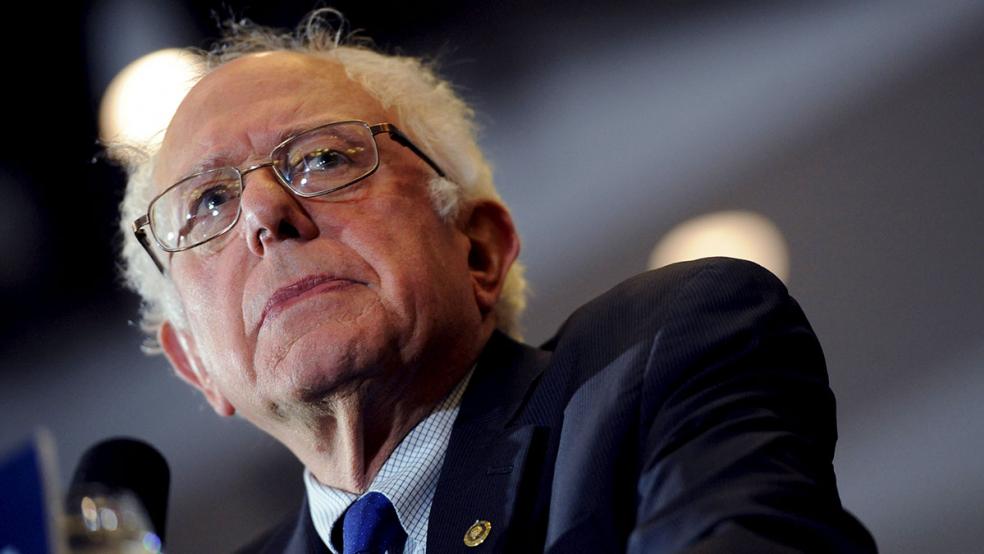Countless gallons of ink and a nearly infinite universe of pixels have been used to describe the civil war within the Republican Party in the 2016 presidential primary cycle. Donald Trump supporters have demanded fealty from self-described NeverTrumpers. Elected GOP officials have chosen sides between the two. The national media covered a meeting between Trump and House Speaker Paul Ryan as though it would amount to a political Appomattox.
Conservative activists have grown increasingly desperate to find a figure with national standing to agree to a quixotic independent run for the White House in November as an alternative to Hillary Clinton and Trump as the bitter divide on the Right continues.
Related: Why Democrats Need Bernie Sanders to Stay in the Race
Don’t look now, but Democrats find themselves in similar circumstances. And unlike on the Right, there is – at least theoretically – an opening for a crack-up on the Left.
Populist anger has driven wedges in both the Republican and Democratic parties in this cycle. It succeeded in seizing the GOP’s presidential nomination with Donald Trump, but appears to have fallen short among Democrats as Bernie Sanders has no mathematical path to the nomination. Clinton will likely clinch in the June 7 primaries – later than anyone would have imagined a year ago, but still getting a first-ballot victory at the Democratic convention in Philadelphia.
That has not mellowed the progressive-populist uprising that made Sanders an unlikely obstacle to the Clinton Restoration, however. Instead, the close call appears to have sharpened its intensity. Saturday’s Democratic caucus in Nevada went out of control when Senator Barbara Boxer tried to speak in support of Hillary Clinton, who had won the contest. Sanders’ delegates booed her initial appearance, and then got even more irate when Boxer scolded them for being “bullies.” Other speakers got shouted down and objects were thrown at others, including at least one bottle that hit an elderly woman. The situation became so unruly that the casino hosting the convention demanded it be shut down – and police were called to restore order.
Nevada’s Democratic Party blamed the Sanders campaign for inciting “violence,” and also for threats made against party leaders in the wake of the caucus disaster. Sanders himself issued a statement denouncing the violence, but added a long list of his own grievances against the state Democratic Party. “The chair of the convention announced that the convention rules passed on voice vote, when the vote was a clear no-vote,” Sanders complained in the statement. “At the very least, the Chair should have allowed for a headcount.”
Related: Would Democrats Be Better Off With Sanders vs. Trump?
That attempt at rationalization spurred the ire of DNC chair Debbie Wasserman Schultz. “The fact that the Sanders campaign has issued a ‘but’ in between condemnation of violence and frustration with the process,” she told MSNBC on Tuesday night, “seems to excuse their supporters’ actions, which is unacceptable.” That was the equivalent of pouring gasoline on a fire.
Sanders’ campaign manager Jeff Weaver went on the same cable network to accuse Wasserman Schultz of a “personal” vendetta against Sanders, and cited this as just the latest example of a process that the DNC chair herself had rigged against his candidate, and in favor of Hillary Clinton. “It’s been clear there’s a pattern of conduct from the beginning of this campaign that has been hostile to Bernie Sanders and his supporters,” Weaver told Steve Kornacki on Wednesday morning, “and she’s really become a divisive figure in the party.”
This eruption has party figures worried about the convention in Philadelphia. Senator Dianne Feinstein told CNN’s Wolf Blitzer that she thought Sanders’ statement was inadequate too. “You know,” Feinstein said, “I don’t want to go back to the ’68 convention.”
Politico’s Daniel Strauss wrote, “The rifts caused by the presidential primary may be deeper than anyone knew,” and quoted a leading Democratic strategist who put the blame on the DNC. The perception of bias “always had the potential to become a reason for Sanders’ partisans to question the legitimacy of Clinton’s victory.”
Still, Sanders has nowhere else to go. Or does he?
Related: Watch Out, Hillary Clinton: A Revolt Is Brewing in the Democratic Party
All of the independent-bid scenarios on the Right have two fatal structural flaws. The first is that they lack a candidate with a national draw; the second is that they lack the organization and time to make it onto enough state ballots. John Kasich got approached for an independent bid, but he’d run afoul of the sore-loser laws in most states that prevent major-party primary candidates from running as independents in a general election.
Kasich lacked a national constituency too, but at least had more of a following than some of the other personalities suggested, including retired Marine Corps General James Mattis and first-term Senator Ben Sasse. Starting an independent bid from scratch requires far more prep time than the calendar will allow, and Texas’ ballot access deadline has already passed.
Do these fatal structural flaws apply to Bernie Sanders? In this case, Sanders himself would be the candidate, and he clearly has a passionate national following. The lifelong backbencher has won 46 percent of the pledged delegates in the Democratic primaries while running against the Clinton machine. Sanders has won coast to coast, and with the exception of the deep South, has won states in every region. His army of voters continues to grow as his wins later in the primary process demonstrates.
Sanders would still face the same sore-loser laws and ballot access issues as would a conservative independent – if he didn’t have an established party to back him. Unlike conservatives, who lack such a nationally established option, there is at least a possibility that Sanders could appeal to the Green Party. The Greens will hold their convention a couple of weeks after the Democrats do, in the first weekend of August.
Related: While Clinton Sets Her Sight on Trump, Sanders Pulls Her Back
The Green Party is most remembered for the spoiler role nominee Ralph Nader arguably played in Florida in the 2000 election, pulling enough votes away from Al Gore to give the state and the election narrowly to George W. Bush. They have struggled for national status ever since, and might welcome Sanders as a means to bid for major-party coverage – especially since they would provide a closer ideological fit for Sanders’ supporters than Hillary Clinton’s Democratic Party might.
A Sanders defection could also help the Greens win a fight over ballot access. As it stands now, though, Sanders could get on enough ballots to have a major impact on the general election. New York, California, Ohio, Michigan, Wisconsin, Oregon, and Colorado are among the 20 states where the Green nominee will get a spot on the ballot no matter what. Those seven states represent 144 Electoral College votes that went to Democrats in 2012. If Sanders split the Left in those states, it might push those states to the GOP; if Sanders actually won those states, it would throw the election to the House of Representatives, where Republicans would control the outcome.
Two weeks ago, the idea that Sanders would take his constituency and go on his own would have seemed ludicrous. With the vitriol ramping up this week and the DNC stoking the fire, it’s at least possible that Sanders will have no use for Democratic Party unity, and has at least a potential option for a party that will allow him to lead. If Democrats don’t act to rein in Wasserman Schultz and engage with Sanders quickly to call a truce, this summer might be more interesting than anyone imagines.






